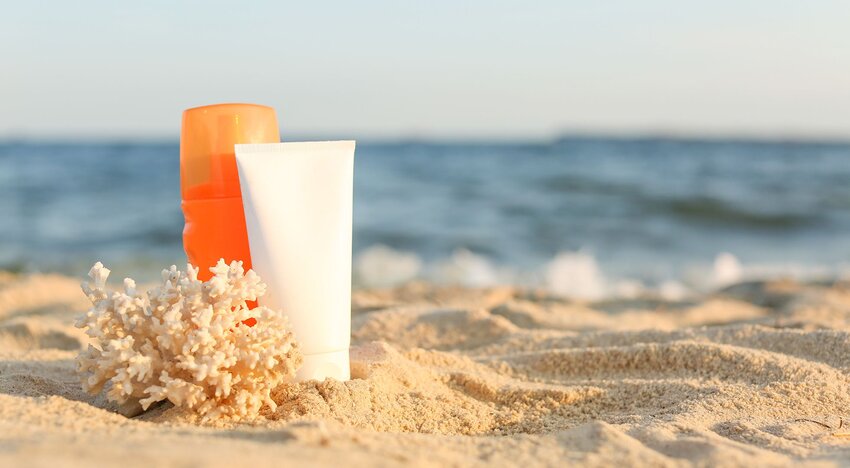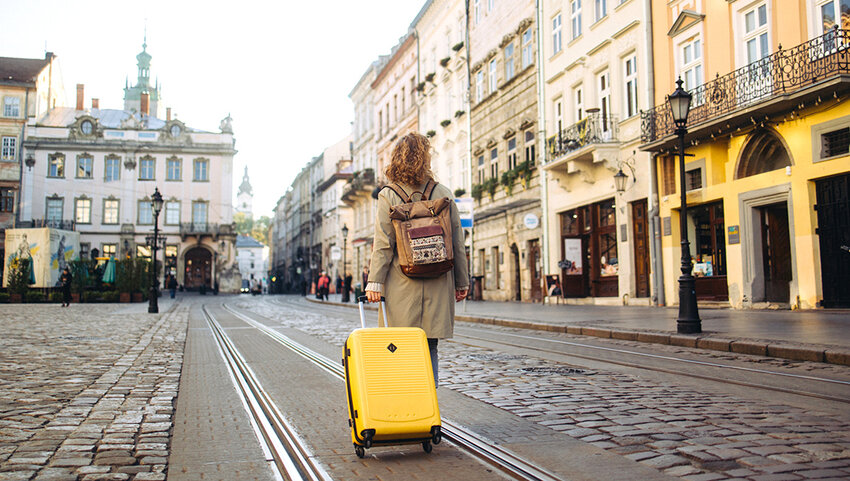For decades, dermatologists (and our moms) have extolled the virtues of sunscreen. The UV-protecting lotions don’t just prevent burns, but also premature aging and skin cancer. While our creams are a tool to protect ourselves, they’re causing great harm to the ocean and its inhabitants.
It's estimated that 14,000 tons of sunscreen end up in the world's oceans each year, which is particularly harmful to coral reefs. The two main culprits are oxybenzone and octinoxate, sunscreen ingredients that absorb UV rays and increase coral bleaching, because when the materials are absorbed they make it hard for the coral to reproduce and grow. It causes the coral to reject the symbiotic algae living in their tissues and turn white.
As of January 1, 2021 both Hawaii and Key West, Florida have banned the sale of sunscreen containing those coral-harming chemicals. It’s great news for the reefs, but can be confusing if you’re not familiar with what makes for safe sunscreen.
How to Choose Reef-Safe Sunscreen

There are a couple elements to consider when looking for a reef-safe sunscreen. First, look for zinc oxide in the ingredient list (and make sure oxybenzone and octinoxate are not). The mineral tends to be less harmful to the ocean than its chemical peers. Another keyword to look for is “non-nano,” meaning the particles are bigger. Simply put, when the minerals are made up of larger particles, they sink when washed off and become part of the ocean floor, rather than being ingested or absorbed by marine life. Sunscreens that are water-resistant are also desirable, as they’ll stay on your skin longer. Less reapplies means less sunscreen in the water. Finally, opt for lotions over aerosols. The spray from the latter can end up on the sand and will eventually wash into the ocean.
While sunscreen isn’t the most damaging force wounding our oceans (we’re looking at you climate change), wearing reef-safe sunscreen is a small thing we can do to be better stewards of the water. Here are just a few options to get you started. (And don’t forget to cover your scalp!)
Thinksport SPF 50+
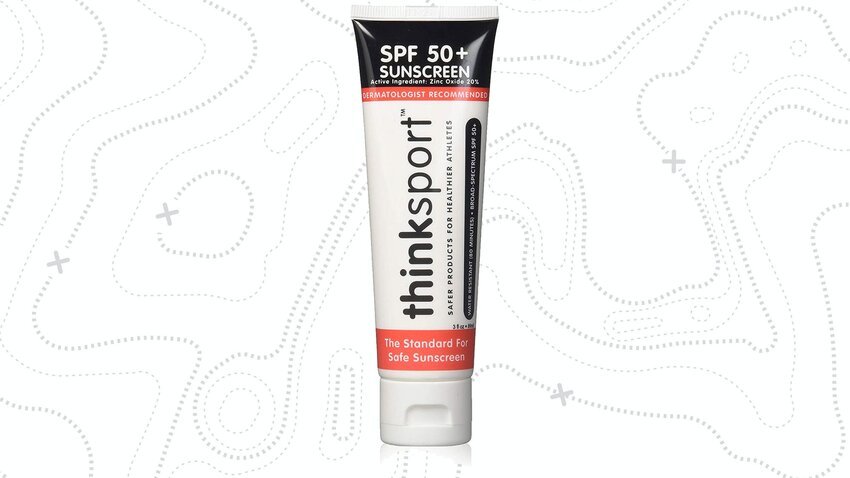
Buy it here: Thinksport SPF 50+ | $8
What’s nice about Thinksport is that it’s easy to find — most big-box outlets, pharmacies, and outdoor goods retailers carry it. It’s free of biologically harmful chemicals and it’s sweat-resistant, making it great for hiking, kayaking, surfing, sailing, and more.
Raw Elements
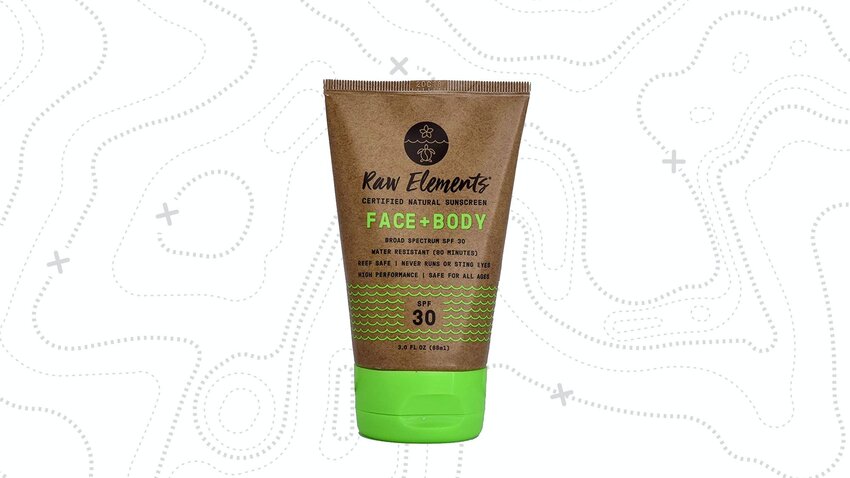
Buy it here: Raw Elements | $17
Like all the other sunscreens on this list, Raw Elements is high performance and rigorously tested to ensure it’s reef-safe. It’s one of the few sunscreens that doesn’t come in a plastic bottle, but rather the company is taking another sustainable step forward by using recyclable and reusable packaging.
Unsun Mineral Tinted Sunscreen
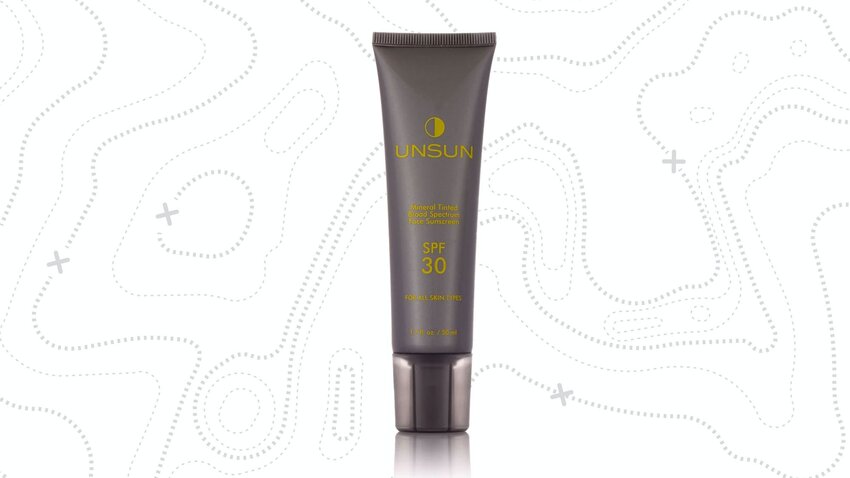
Buy it here: Body and Face Sunscreen | $29 to $34
Most zinc-based sunscreens can give the wearer a ghostly look, but this tinted sunscreen from Unsun dries invisibly. The brand even makes different hues to better match various skin tones (from very light to dark, according to their website).
Hello Bello Mineral Sunscreen
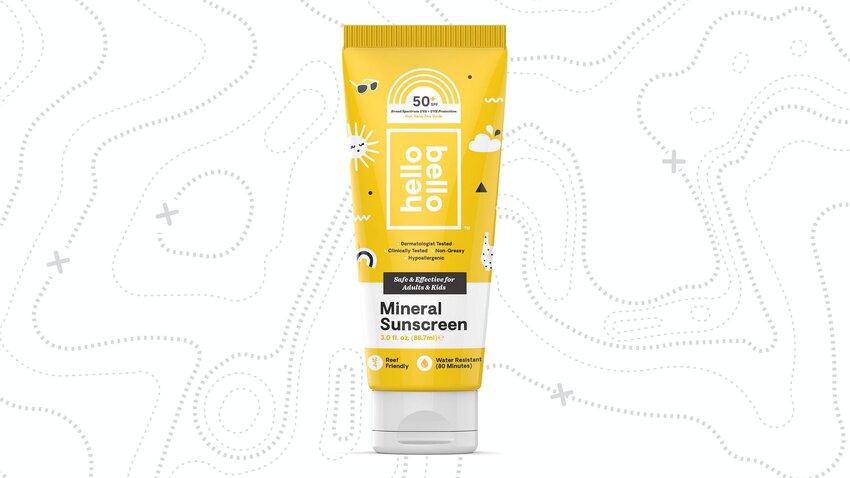
Buy it here: Hello Bello Mineral Sunscreen | $9
Made by Kristen Bell and Dax Shepard’s company, this sunscreen checks our reef-friendly, water-resistant, and zinc-based boxes, while also being creamy (therefore easier to apply on kids), moisturizing, and cruelty-free.
Bare Republic Mineral Sport
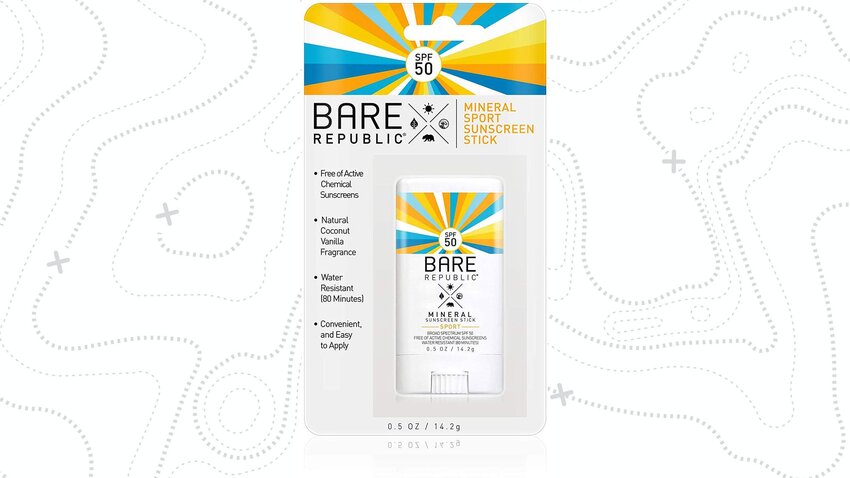
Buy it here: Bare Republic Mineral Sport |~$13.50
This sunscreen rolls up like a deodorant, making it so easy to reapply after swimming for a while when your skin is wet and hands are sandy or to apply with one hand if you’re on the go.
Blue Lizard

Buy it here: Blue Lizard |$10
While this sunscreen isn’t quite as water resistant as others (only 40 minutes), its cream is designed to be good for sensitive skin and the bottle itself reminds you to reapply throughout the day — when there are harmful UV lights present, the bottle changes from white to blue.
Main photo by Pixel-Shot/Shutterstock.

